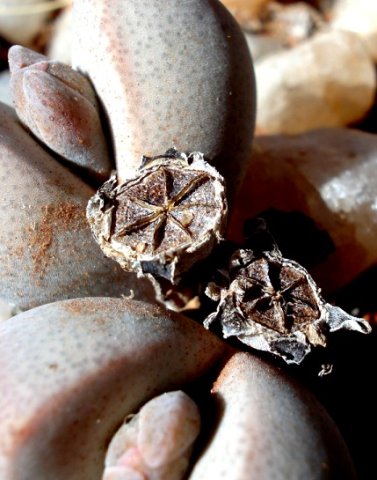Dinteranthus microspermus subsp. puberulus with dry capsules

Author: Ivan Lätti
Photographer: Judd Kirkel Welwitch
The dry, ripe seed capsules of Dinteranthus microspermus subsp. puberulus seen here are covered by canopy-like segments or valves over each of its locules that by now contain seeds. Visible in the photo are six and seven locules in the flat-topped capsules respectively. Some dry, ragged remains of the once fleshy sepals that enveloped the flower can still be seen at the edges of these capsules.
The new bud growing at the back shows what these sepals look like when they are still functional in protecting the corolla and vital reproductive parts.
The specific name of microspermus means small seeds.
Seed dispersal is triggered by rain: When, or if the rain comes, the valves open and seeds are simply washed out, deposited close to where the parent plant had produced them. This dispersal method enhances the chances of the seeds also finding a suitable spot, as successful reproduction has been proven right here. When the capsule dries, the valves close again (Cowling and Pierce, 1999; Smith, et al, 1998).

